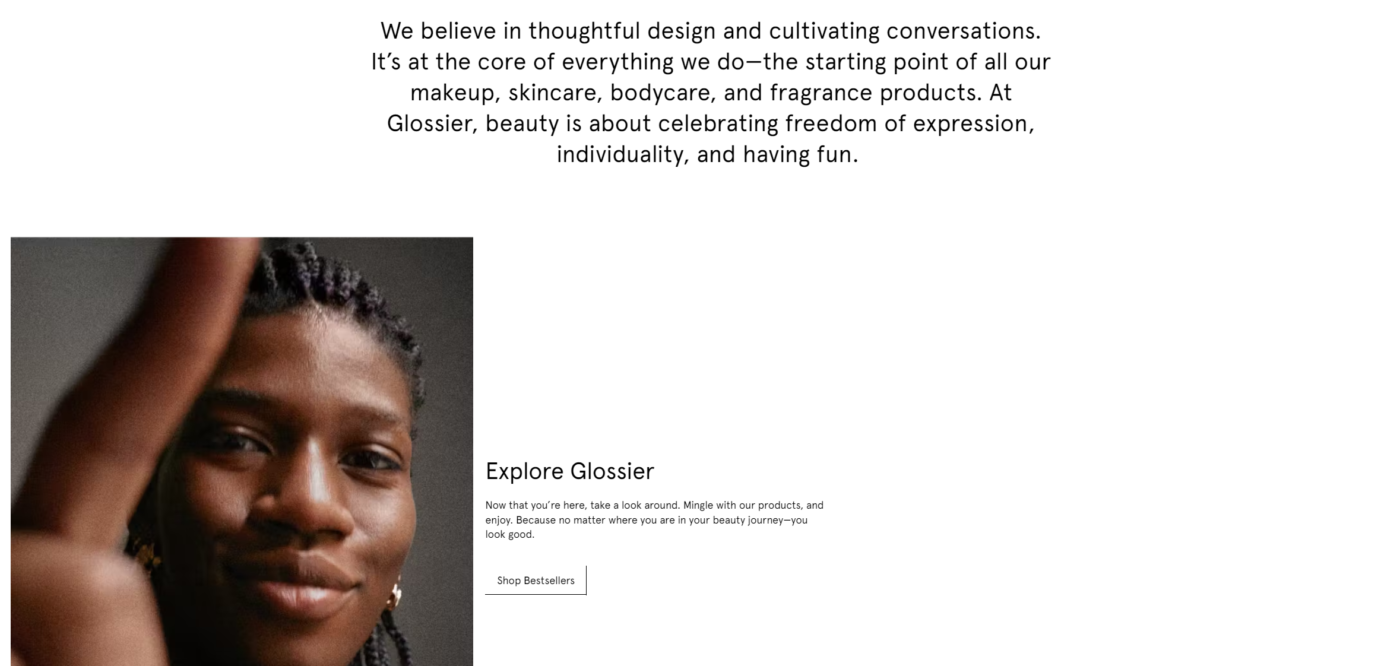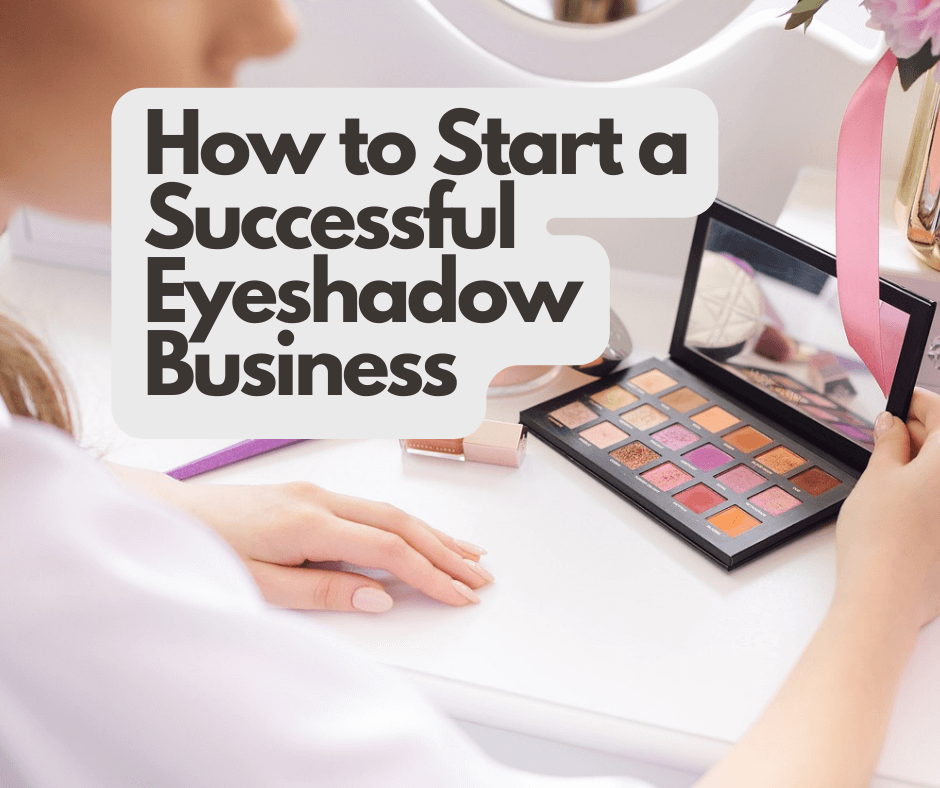Are you looking to start your own makeup brand or expand your existing one? Private labeling your own wholesale eyeshadow palettes could be the perfect option for you.
But where do you even begin? Don’t worry, we’ve got you covered with our ultimate guide to wholesale eyeshadow palettes.
In this comprehensive guide, we’ll walk you through everything you need to know about private labeling, including finding the right supplier and marketing your brand. With our expertise in the cosmetic industry marketing over 10 years, we’ll help you craft a brand that stands out from the competition and attracts loyal customers. So, let’s get started on creating your own custom wholesale eyeshadow palette brand!
Table of Content
1. Decide on your niche and target market
2. Define your brand identity and marketing strategy
- Craft a brand story
- Choose a business name and logo
- Marketing promotion
3. Create or source your eyeshadow products
- Make it yourself, wholesale, or white label manufacturing
- Pros and cons
- Local and overseas white label manufacturers and their pros and cons
- Vendor list
4. Create your website and online store
5. Form a legal entity and register for taxes
6. Conclusion
1. Decide on your niche and target market
Before you start your eyeshadow business, it’s crucial to identify a niche within the market that will set your brand apart. Possible niches include vegan and cruelty-free products, highly pigmented and vibrant colors, or easy-to-use formulas for makeup beginners. Your niche should reflect your passion and expertise in the industry and cater to the specific needs of your target audience. Leecosmetic has a professional consulting team to provide you with tips and tricks on how to create the perfect eyeshadow palette to suit your target market.
2. Define your brand identity and marketing strategy
a) Craft a brand story
Craft a compelling brand story that highlights your brand’s values, mission, and the problem your products aim to solve. This story will help build an emotional connection with your target audience and differentiate your brand from competitors. Use this story to inform all aspects of your marketing strategy, from product packaging to social media campaigns.
For example, imagine you are starting a cruelty-free and vegan eyeshadow brand called “Nature’s Hues.” Your brand story could be something like this:
“Nature’s Hues was born from a deep love for animals and a passion for vibrant, high-quality makeup. We believe that beauty should never come at the expense of our furry friends, so we’ve made it our mission to create cruelty-free and vegan eyeshadows that are not only kind to animals but also kind to your skin. Our founder, Jane Doe, was inspired by the breathtaking colors found in nature and set out to create a line of eyeshadows that capture the beauty of the earth without harming its inhabitants. At Nature’s Hues, we’re dedicated to providing makeup lovers with a conscious alternative that doesn’t sacrifice performance or pigmentation.”
In this example, the brand story communicates the founder’s passion for animals and the environment, the brand’s commitment to cruelty-free and vegan products, and the inspiration behind its eyeshadow line. This story establishes an emotional connection with potential customers who share similar values and may be more inclined to support a brand that aligns with their beliefs.

b) Choose a business name and logo
Your business name and logo should reflect your brand’s identity and resonate with your target audience. Choose a name that is unique, memorable, and easy to spell and pronounce. Your logo should be visually appealing and versatile enough to work on various platforms, such as social media, packaging, and websites. You can use online tools like TRUiC’s Business Name Generator or Logo Maker to help you with this process.
Here are some suggestions for eyeshadow business names:
- ShinyEyes
- TheShimmerbox
- EyesbySassy
- Azzale
- EyeshadowIce
- Eyedolls
- StunningSparkle
Make sure to do research to avoid potential trademark issues.
c). Marketing promotion for wholesale eyeshadow palettes
You should also develop a marketing strategy that outlines how you will promote your eyeshadow products and reach your audience. You can use online channels like social media, email marketing, blogging, influencer marketing, etc., as well as offline channels like word-of-mouth, flyers, events, etc., to spread the word about your business.

3. Create or wholesale eyeshadow pallets
Do you want to create your own eyeshadow line from scratch, or do you want to sell existing products from other brands? What you decide will depend on your time, skill level, and how much money you have available.
a) Make it yourself, white label or wholesale eyeshadow pallets
There are three main options for creating your eyeshadow products: make them yourself, purchase them wholesale, or use a white-label makeup manufacturer. Making the products yourself allows for complete control over ingredients and formulation, but may be time-consuming and require specialized knowledge. Wholesale purchases involve buying pre-made products in bulk and reselling them under your brand, while white-label manufacturers produce products that you can customize and sell as your own.
b) Pros and cons
- Make it yourself: total control, unique formulations, potentially lower costs; requires specialized knowledge, time-consuming, The initial costs for ingredients and equipment can range from a few hundred to several thousand dollars, depending on the quality and quantity of materials you choose.
- Wholesale: easier to start, potentially lower costs, less control over formulations, less differentiation. Typically, you can expect to pay anywhere from $1 to $10 per eyeshadow unit, with the potential for lower prices as you order larger quantities.
- White-label: more control than wholesale, custom eyeshadow with your name and logo, custom packaging, potentially higher costs, may require larger order quantities, which can range from 500 to 5,000 units or more. To cut costs, look for manufacturers or white label company that accommodate lower quantities
To cut costs, it’s suggested to look for manufacturers or white label/private label companies that accommodate lower quantities. For example, you can check out Leecosmetic, which is a private label eyeshadow supplier that offers a full range of eyeshadow colors with various formulas and packaging options. Furthermore, Leecosmetic provides wholesale eyeshadow palettes started with 12 MOQs that help you start your business fast.
c) Local and overseas white label manufacturers for wholesale eyeshadow pallets
When privately labeling your own wholesale eyeshadow palettes, you can opt for a local or overseas partner. Local manufacturers may offer better communication, shorter lead times, and potentially lower shipping costs. However, they may also have higher production costs.
Overseas manufacturers, particularly those in countries with lower labor costs, may offer more competitive pricing. However, they may have longer lead times, higher shipping costs, and potential communication barriers.
d) Vendor list
4. Create your website and online store for wholesale eyeshadow palettes
You should have a professional and user-friendly website that showcases your eyeshadow products and allows customers to place orders online. You can use platforms like Shopify or WooCommerce to create your online store easily and securely. You should also optimize your website for SEO (search engine optimization) to rank higher on Google and drive more organic traffic to your site.
5. Form a legal entity and register for taxes
Generally speaking, you do not need a license to sell cosmetics online, but you do need a license to run your business legally. Some manufacturers require that you have an EIN Number and/or Business License especially US-based manufacturers tend to be a bit more stringent. You should decide on the best legal structure for your business, such as a sole proprietorship, LLC, or corporation. This will affect your liability, taxation, and compliance requirements.
6. Conclusion
Private labeling your own wholesale eyeshadow palettes are the perfect way to establish your brand and stand out in a competitive market. By focusing on your niche, target market, brand identity, marketing strategy, and product creation, you can build a successful and sustainable business in the competitive cosmetics industry. Stay true to your brand’s mission and values, and always keep your target audience in mind as you make decisions and grow your business.

